THE WAY WE DANCE, DIR. Wong Sau Ping (2013)
Kwun Tong Industrial Centre, Hong Kong
Directed by Adam Wong Sau Ping, The Way We Dance is a Hong Kong film about a group of young street-dancers, in which the main character Fleur pursues her dream with her dance crew with an ambition to defeat their archrivals, Rooftoppers. One of the iconic scenes was filmed in the Kwun Tong Industrial Center, where Rooftoppers were first introduced as a fierce dance crew through the carefully designed camera movements and lighting. The Kwun Tong Industrial Center is located at 460-470 Kwun Tong Road. Wong sets the scene in an Industrial Center since factory buildings are places to harbour the local cultural community, as to demonstrate the underground status of Rooftoppers.
The scene starts from a local restaurant in the building where Wong transforms it into an underground gathering place by using dark, cool lighting. The space is activated with the characters’ movements when dancers dance and jump over the tables to play the game of “bringing the cap to the roof”.
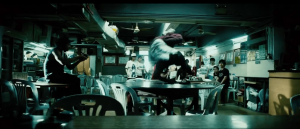
Restaurant in the Kwun Tong Industrial Center being transformed into a dancers’ gathering place. Scenes from The Way We Dance, 2003, directed by Adam Wong Sau Ping.
The scene proceeds when the dancers race out of the room and travel along the corridor with dance tricks. The lighting remains to be dark and cool, with spot lights showering downwards from the ceiling. The film explores multi-dimensions within the narrow corridor, with dancers utilising surfaces of the walls and the floor to visually expand the height and width of the space. The corridors are portrayed as a maze with dancers turning around several corners and finally arriving at the lift lobby, where the narrow space becomes more open.
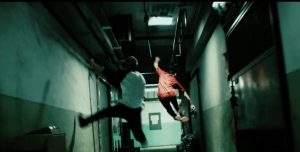
Dancers playing dance tricks while traveling along the corridor. Scenes from The Way We Dance, 2003, directed by Adam Wong Sau Ping.
In reality, however, the restaurant has changed into a grocery store. It has a brighter lighting, and is less dynamic compared to the film. The space is less operated with the lack of variations of circulation. As for the corridor, the camera viewpoint is similar to the eye-level of a regular passer-by. Yet, without the dark lighting and the dynamic movements, the corridor is in reality defined by stability and depth. Regular inhabitants like customers and industrial workers, would mainly experience the narrowness and depth of the space as they walk continuously towards a never-ending journey.
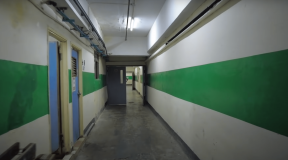
Corridor in the Kwun Tong Industrial Center Phase 4 in 2022.
In my point of view, the dark, cool lighting tells the undercover status of the culture in society. Wong uses chiaroscuro to contrast the dark silhouette of dancers with the brighter corridor, to provide the audience a sense of uncertainty and mystery, and to portray the depth and linearity of the corridor. Using slightly shaky camera shots, Wong not only accentuates the velocities and dynamics of the dancers, but also tightens the tension in the chasing scene while bringing mobility to the surfaces of the corridor. While some scenes follow the dancers’ silhouettes at lower angles, they highlight the dancers’ movements and their interaction with the regular industrial workers, which displays the local activities of the everyday space, also showing the phenomenon of cultural clash in urban Hong Kong. Overall, the film gives Industrial Centre new operations by emphasizing the mobility and speed of its characters.
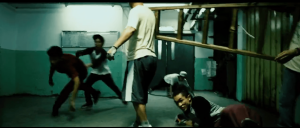
Shaky camera shots coordinating with the dancers’ and the industrial workers’ movements. Scenes from The Way We Dance, 2003, directed by Adam Wong Sau Ping.
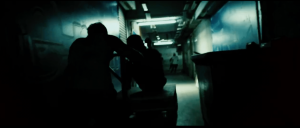
Dark silhouettes of dancers in the corridor. Scenes from The Way We Dance 2003, directed by Adam Wong Sau Ping.
To Tiffany 3035838420
Your analyses have skillfully merged the storyline and film techniques very well. You have commented on multiple visual aspects of the film, from the spaces, camera angles, movement as well as coloring to support your view. Nonetheless, your virtual field trip materials seem to be rather limited. It would be great if you can utilize the visuals to contrast the spaces’ appearance in the film and that in reality.